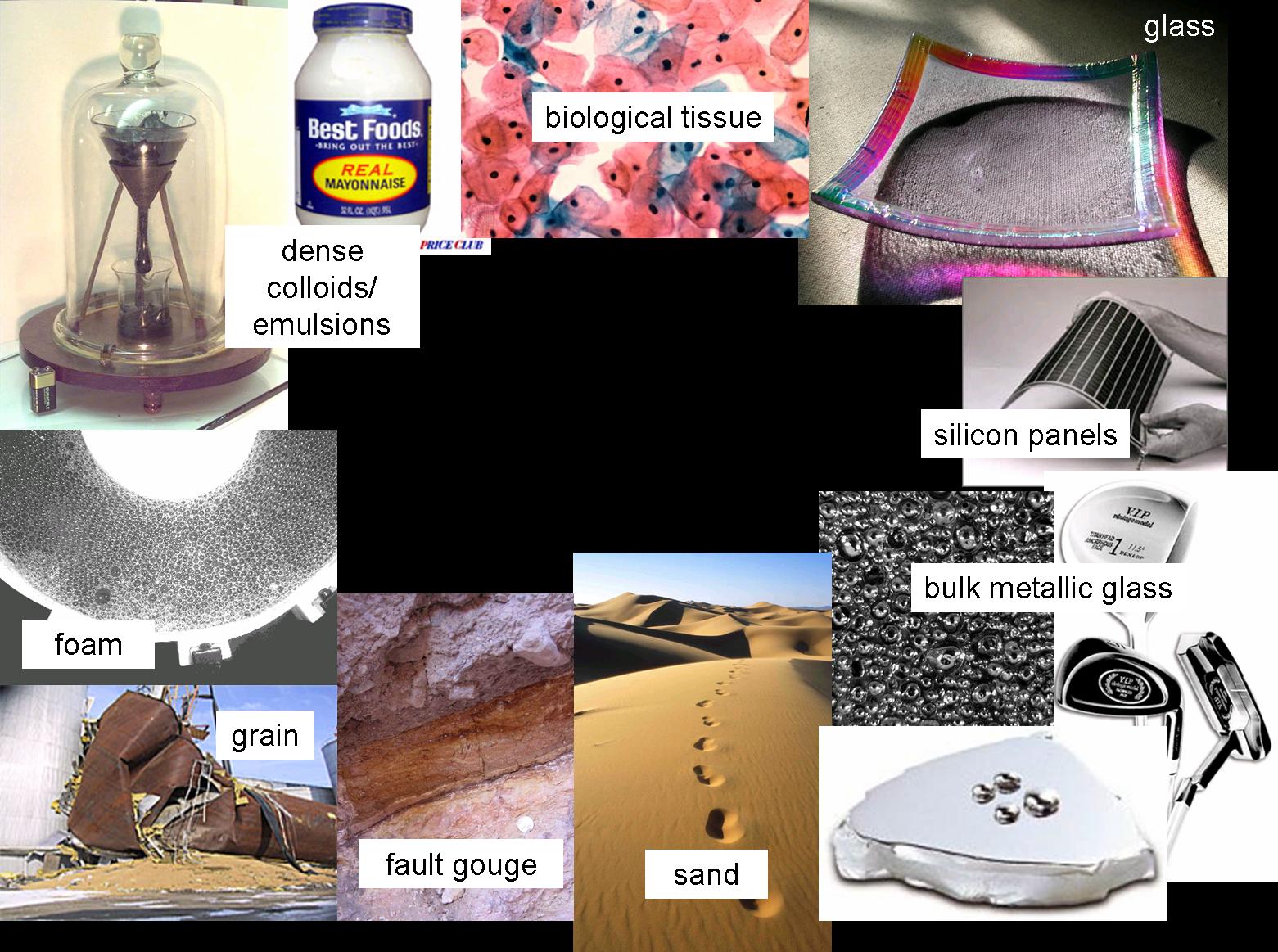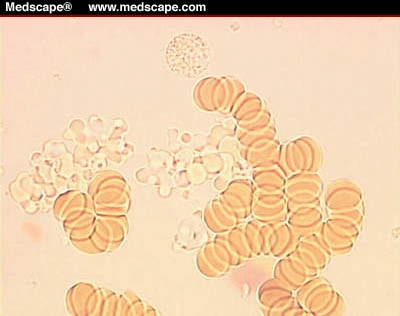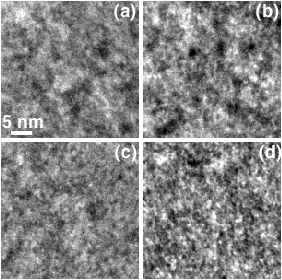In part of the older literature, the term has been used synonymously with glass. Nowadays, "amorphous solid" is considered to be the overarching concept, and "glass" the more special case: A glass is an amorphous solid that transforms into a liquid upon heating through the glass transition.
It is difficult to make a distinction between truly amorphous solids and crystalline solids if the size of the crystals are very small. Even amorphous materials have some short-range order at the atomic length scale due to the nature of chemical bonding. Furthermore, in very small crystals a large fraction of the atoms are located at or near the surface of the crystal; relaxation of the surface and interfacial effects distort the atomic positions, decreasing the structural order. Even the most advanced structural characterization techniques, such as x-ray diffraction and transmission electron microscopy, have difficulty in distinguishing between amorphous and crystalline structures on these length scales.
The occurrence of amorphous phases turned out as a phenomenon of particular interest for studying thin film growth. Remarkably, the growth of polycrystalline films is often preceded by an initial amorphous layer, the thickness of which may amount to only a few nm. The most investigated example is represented by thin multicrystalline silicon films, where such an initial amorphous layer was observed in many studies. Wedge-shaped polycrystals were identified by transmission electron microscopy to grow out of the amorphous phase only after the latter has exceeded a certain thickness, the precise value of which depends on deposition temperature, background pressure and various other process parameters. The phenomenon has been interpreted in the framework of Ostwald's rule of stages that predicts the formation of phases to proceed with increasing condensation time towards increasing stability. Experimental studies of the phenomenon require a clearly defined state of the substrate surface and its contaminant density etc., upon which the thin film is deposited.

While amorphous materials

Amorphous materials

network structure of amorphous

Amorphous Materials and

clear amorphous material

Many amorphous materials have

amorphous materials soften

Amorphous materials may form

in amorphous materials via

in amorphous materials,

Cover of: Diffusion in Amorphous Materials by H. Jain

of the scattering between

and amorphous material

The production of amorphous

Amorphous Materials

amorphous materials volume
It is difficult to make a distinction between truly amorphous solids and crystalline solids if the size of the crystals are very small. Even amorphous materials have some short-range order at the atomic length scale due to the nature of chemical bonding. Furthermore, in very small crystals a large fraction of the atoms are located at or near the surface of the crystal; relaxation of the surface and interfacial effects distort the atomic positions, decreasing the structural order. Even the most advanced structural characterization techniques, such as x-ray diffraction and transmission electron microscopy, have difficulty in distinguishing between amorphous and crystalline structures on these length scales.
The occurrence of amorphous phases turned out as a phenomenon of particular interest for studying thin film growth. Remarkably, the growth of polycrystalline films is often preceded by an initial amorphous layer, the thickness of which may amount to only a few nm. The most investigated example is represented by thin multicrystalline silicon films, where such an initial amorphous layer was observed in many studies. Wedge-shaped polycrystals were identified by transmission electron microscopy to grow out of the amorphous phase only after the latter has exceeded a certain thickness, the precise value of which depends on deposition temperature, background pressure and various other process parameters. The phenomenon has been interpreted in the framework of Ostwald's rule of stages that predicts the formation of phases to proceed with increasing condensation time towards increasing stability. Experimental studies of the phenomenon require a clearly defined state of the substrate surface and its contaminant density etc., upon which the thin film is deposited.

While amorphous materials

Amorphous materials

network structure of amorphous

Amorphous Materials and

clear amorphous material

Many amorphous materials have

amorphous materials soften

Amorphous materials may form

in amorphous materials via

in amorphous materials,

Cover of: Diffusion in Amorphous Materials by H. Jain

of the scattering between

and amorphous material

The production of amorphous

Amorphous Materials

amorphous materials volume

No comments:
Post a Comment